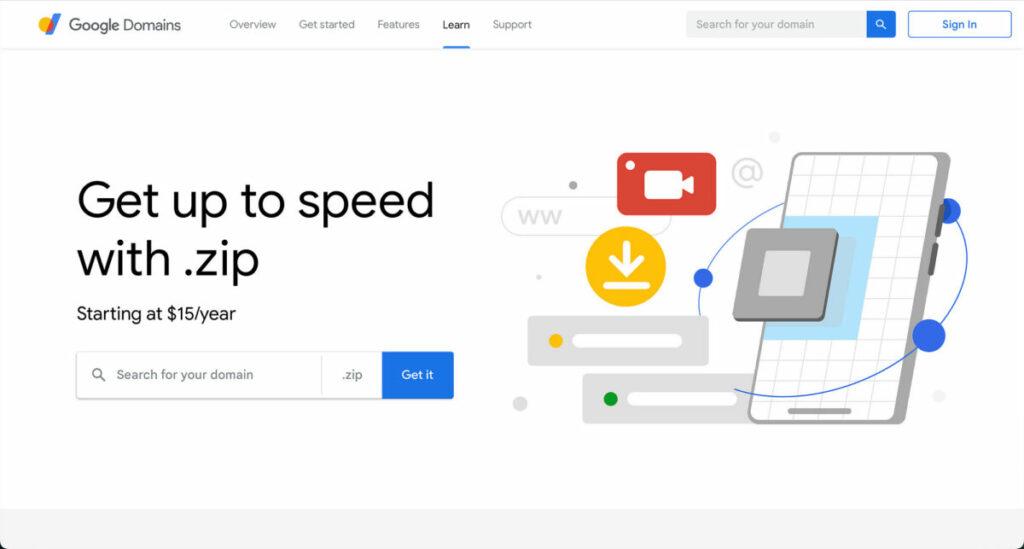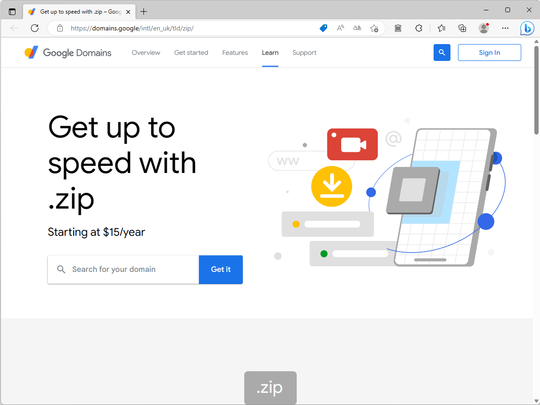It’s not often that we see a new web domain in this internet era where the .com domain has become ingrained in most people’s minds. The introduction of a new domain requires a clear reason for people to adopt it.
Google seems to have an idea for that and has released a new web domain that has left netizens slightly confused. The new Google domain, .zip, is being sold at a starting price of $15 per year, leaving people wondering about the reasoning behind this name choice.
Google Releases New .zip Web Domain

One of the things that has confused and concerned netizens is that the new domain uses the exact same ending as the .zip file extension, which is a format used for data compression. This creates a clash between the two names that are 100% identical.
This could potentially lead to misunderstandings in the future when users want to download a .zip file but end up being directed to a website instead. Considering the prevalence of phishing links recently, such misunderstandings are highly likely to occur.
Concerns about Google .zip Becoming a New Phishing Method
Many netizens also disagree with the release of this Google top-level domain (TLD) and argue that the .zip TLD is unnecessary. They believe it is a poor design choice that will confuse users.
Regarding the .zip domains I complained about – I think it's dumb and unnecessarily creates confusion and will leave to various minor phishing schemes/tricks/address-confusion attacks… but it's just going to get forced into being another TLD. It just feels uniquely unneeded.
— SwiftOnSecurity (@SwiftOnSecurity) May 12, 2023
However, not everyone sees this as a threat. One of them is Microsoft employee Troy Hunt, the creator of HaveIBeenPwned, who says, “Humans are bad with URLs, and TLDs won’t affect that.” According to him, most people won’t even realize if the link they visit is genuine or fake. The only issue is that websites with .zip endings are too closely associated with a file format.
Read it? Good, here's the problem: let's start with the opening para which asserts that you can't quickly tell which URL is legit due to the .zip TLD. That's true, you can't. But which URL in the second image is the real Google blog site? https://t.co/1SqKI2KWju pic.twitter.com/xGg4eIXqMS
— Troy Hunt (@troyhunt) May 17, 2023
For now, internet users and netizens should be more cautious and avoid clicking on strange links because the threat of phishing is always present and evolving.

